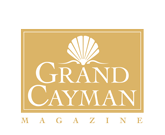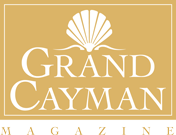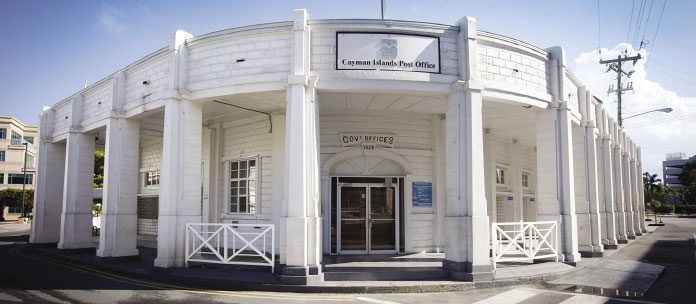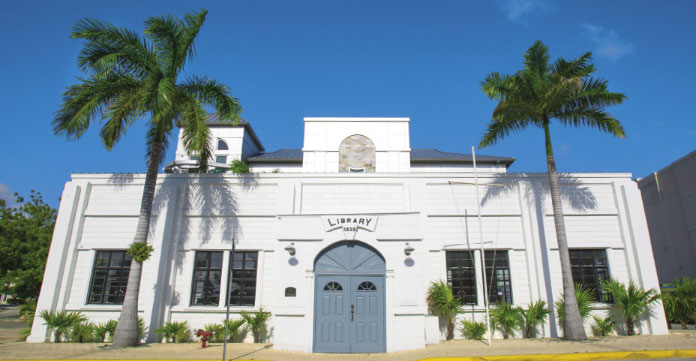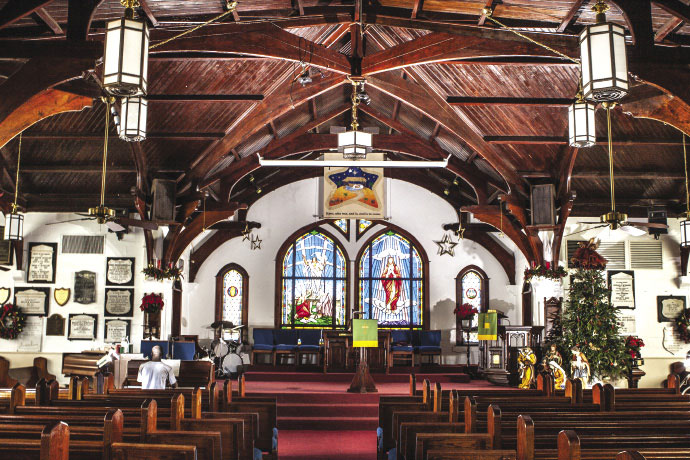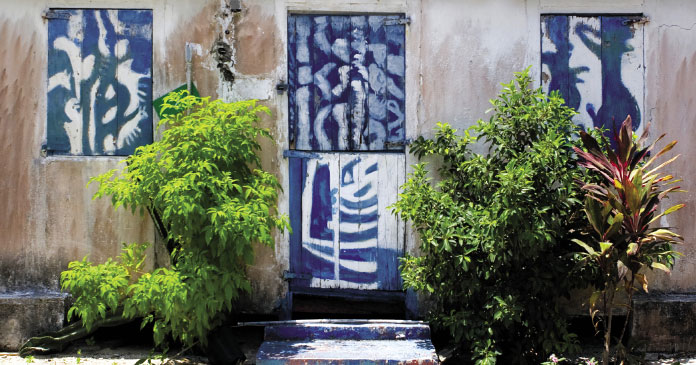You pass them every day, but do you know their stories – or backstories? It’s time to explore some of the lesser-known landmarks and unsung heroes that are woven into the fabric of Cayman’s culture.
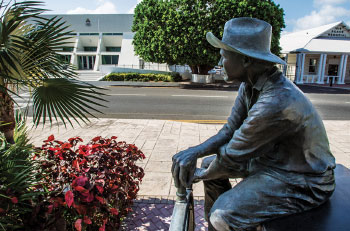 “We have no time to stand and stare,” poet William Henry Davies lamented more than a century ago. What would he make of the status quo today? Hurrying from office to grocery store to school run and so on, our eyes in the interim minutes locked on our phones or the bumper of the car ahead, we have less time than ever to pause and indulge curiosity. All but the showiest of sights slip by, unnoticed.
“We have no time to stand and stare,” poet William Henry Davies lamented more than a century ago. What would he make of the status quo today? Hurrying from office to grocery store to school run and so on, our eyes in the interim minutes locked on our phones or the bumper of the car ahead, we have less time than ever to pause and indulge curiosity. All but the showiest of sights slip by, unnoticed.
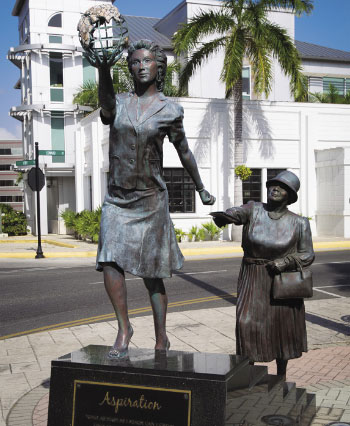 This is what strikes us in Heroes Square where the bronze figures posing around the fountain draw not a glance from the passers-by dashing into Butterfield Bank and Café del Sol.
This is what strikes us in Heroes Square where the bronze figures posing around the fountain draw not a glance from the passers-by dashing into Butterfield Bank and Café del Sol.
One of these bronze honorees is James Manoah Bodden Senior (known to all Caymanians as “Mr. Jim”). Mr. Jim was declared the first National Hero of the Cayman Islands for his modernizing leadership through the 1970s-90s. During this time, he established Cayman Airways and led the effort to build Owens Roberts International Airport. Keeping company with him is a father and son duo by Canadian sculptor Simon Morris; they are meant to be perched on a ship’s deck in a tribute to Cayman’s seafaring heritage. A few feet away, a pair of women ascend a flight of steps in a piece representing the work and struggles of Caymanian women, including those who successfully petitioned for the right to vote.
 More milestones are commemorated in splashes of bright color on the “Wall of History” located near the Legislative Assembly building. On its tiles are newly emancipated slaves dancing jubilantly, shipwrecked admirals being saved by fishermen, fighter jets, the foundation of Fort George, and even Sir Francis Drake in profile.
More milestones are commemorated in splashes of bright color on the “Wall of History” located near the Legislative Assembly building. On its tiles are newly emancipated slaves dancing jubilantly, shipwrecked admirals being saved by fishermen, fighter jets, the foundation of Fort George, and even Sir Francis Drake in profile.
What remains of Fort George today is admittedly rather less impressive than the mural would suggest – especially for anyone who has visited the grand structures of Cuba, Puerto Rico, Saint Kitts and other Caribbean neighbors – its coral and limestone walls little more than ridges in the earth. “Historic but sad,” one visitor writes online.
The fort was knocked down in 1972 by a property developer following a dispute about planning permission. Apparently as a backhoe began demolition, a few residents rushed to stop the destruction but managed to save only three small sections of wall.
 More noticeable nowadays is the curious wooden treehouse that rises above it, a silk cotton tree that was converted into a lookout post for German submarines during World War II (what you see there today is a reconstruction using salvaged parts of the original). As a former sergeant, Clifton Bodden recalled: “We had 42 steps from the ground to the cotton tree and in that lookout we had some very good binoculars, and when you go up in that, you could see everything from Spotts Beach down from the Northwest Point, because at that time we didn’t have all those tall trees and buildings.”
More noticeable nowadays is the curious wooden treehouse that rises above it, a silk cotton tree that was converted into a lookout post for German submarines during World War II (what you see there today is a reconstruction using salvaged parts of the original). As a former sergeant, Clifton Bodden recalled: “We had 42 steps from the ground to the cotton tree and in that lookout we had some very good binoculars, and when you go up in that, you could see everything from Spotts Beach down from the Northwest Point, because at that time we didn’t have all those tall trees and buildings.”
Still, in the heart of downtown George Town, there are several buildings that have stood their ground amid the rush of development, despite their diminutive size. Look at the clutch of simple white-washed structures bordering Heroes Square: George Town Hall (1923), the Clock Tower (1937), and the Public Library (1939). Also, the General Post Office (1939) around the corner. If they appear of a piece it is because the same man designed all four, Captain Rayal Bodden.
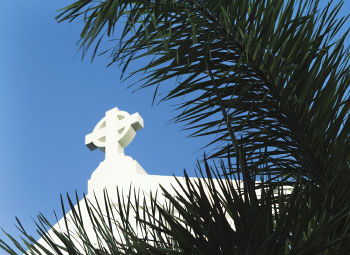 It is hard to believe that the cottage-like Town Hall was once dubbed “Hutchings’ Folly” (Hutchings being the Commissioner at the time) because it was considered too big for such a small island. It had a varied life as a courthouse, Assembly Room, playhouse and dancehall, though now both legal and social events have long since found new homes. Equally incredible today is the fact that stamps, not financial services, were once the single most important source of revenue for the Cayman Islands Government.
It is hard to believe that the cottage-like Town Hall was once dubbed “Hutchings’ Folly” (Hutchings being the Commissioner at the time) because it was considered too big for such a small island. It had a varied life as a courthouse, Assembly Room, playhouse and dancehall, though now both legal and social events have long since found new homes. Equally incredible today is the fact that stamps, not financial services, were once the single most important source of revenue for the Cayman Islands Government.
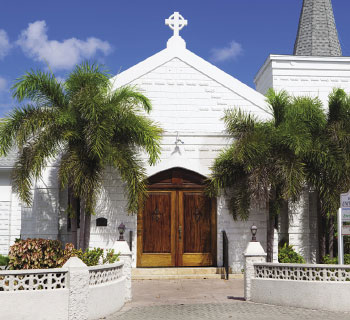 You must step inside these buildings to see the most distinctive aspect of Captain Bodden’s architecture. Here are the impressive timber hammer-beam ceilings resembling ships’ upturned hulls that point to Bodden’s background as an accomplished ship-builder. He left the same signature at the Elmslie Memorial United Church on the waterfront (named after the first Presbyterian missionary to work in Cayman), for which he used wood salvaged from shipwrecks. Indeed, it has often been remarked that now the best places to see the skills of traditional Caymanian shipbuilders are on land, in these very buildings.
You must step inside these buildings to see the most distinctive aspect of Captain Bodden’s architecture. Here are the impressive timber hammer-beam ceilings resembling ships’ upturned hulls that point to Bodden’s background as an accomplished ship-builder. He left the same signature at the Elmslie Memorial United Church on the waterfront (named after the first Presbyterian missionary to work in Cayman), for which he used wood salvaged from shipwrecks. Indeed, it has often been remarked that now the best places to see the skills of traditional Caymanian shipbuilders are on land, in these very buildings.
Of course, George Town is not the only place that harbors monuments to Caymanian creativity. In South Sound one finds the inimitable Miss Lassie’s House. It is a perfect example of a 19th century wattle and daub building, but that is only a footnote; the real wonders here are the vibrant paintings that cover the walls, doors and ceilings. The former owner and now deceased Gladwyn K. Bush was driven by a visionary experience – a vivid dream of Jesus, decades earlier – to take up brushes and house paint at the age of 62, adorning even her pillow cases and refrigerator.
 The images that spilled from her “mind’s eye” are rich in Christian symbolism: Sometimes the mood is jubilant, such as gilded angels and crowned, smiling Christs; at others, deeply somber, with looming black crucifixes and tears of blood. Another force that seems to permeate this life-size canvas is the ocean, hardly surprising when you hear the waves lapping at the property’s backyard and consider how many in Miss Lassie’s family lived off the sea (many brothers were captains and her father a shipbuilder), or were lost there.
The images that spilled from her “mind’s eye” are rich in Christian symbolism: Sometimes the mood is jubilant, such as gilded angels and crowned, smiling Christs; at others, deeply somber, with looming black crucifixes and tears of blood. Another force that seems to permeate this life-size canvas is the ocean, hardly surprising when you hear the waves lapping at the property’s backyard and consider how many in Miss Lassie’s family lived off the sea (many brothers were captains and her father a shipbuilder), or were lost there.
Visual culture often makes one think of past fragments in need of preservation. But it is also a living and evolving thing, as demonstrated by Davinoff’s Concrete Sculpture Garden in North Side. Scattered around the sandy front yard of this property is a menagerie of concrete sculptures: A giant octopus, a crab and a Godzilla-esque blue iguana (named Specter, Clawdette and Ivana, respectively) as well as humble chickens and flying fish. They are the handiwork of Wisconsin builder David Quasius, created during his annual holidays to Cayman.
 “As I was making the first large sculpture of Ivana, people started stopping and it provided me an opportunity to meet visitors from all over the island and the world… Best of all, right in my front yard,” Quasius says. “I liked that a lot, so I continued to make more sculptures and grow the collection.” There are currently 18 pieces, each taking around six to eight weeks to produce. This winter, he plans to make a starfish.
“As I was making the first large sculpture of Ivana, people started stopping and it provided me an opportunity to meet visitors from all over the island and the world… Best of all, right in my front yard,” Quasius says. “I liked that a lot, so I continued to make more sculptures and grow the collection.” There are currently 18 pieces, each taking around six to eight weeks to produce. This winter, he plans to make a starfish.
He adds: “The very best part of having the park is hearing the laughter of the children as they run from one super-sized animal to another. It’s very satisfying to be able to bring some laughter and amazement into the world… It’s a small payback to the island my wife Kath and I have come to love.”
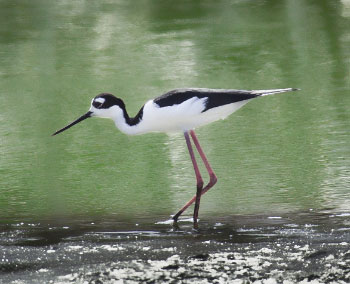 And what of Cayman’s lesser-known natural wonders? Our spectacular beaches and sandbar unsurprisingly take the lion’s share of attention, but there are peaceful and beautiful retreats inland that plenty of long-term islanders have never visited. Take the Governor Michael Gore Bird Sanctuary, for instance. Many pass its roadside sign in Savannah and yet have not ventured in. They should.
And what of Cayman’s lesser-known natural wonders? Our spectacular beaches and sandbar unsurprisingly take the lion’s share of attention, but there are peaceful and beautiful retreats inland that plenty of long-term islanders have never visited. Take the Governor Michael Gore Bird Sanctuary, for instance. Many pass its roadside sign in Savannah and yet have not ventured in. They should.
A boardwalk leads out to a pond where small turtles break the still green water and a heron stands as frozen as those Heroes Square bronzes. Butterflies’ wings blink white and yellow. There are birds in the branches of the surrounding woods – warblers, kingfishers and thrushes – occasionally darting down to take a sip from the pond. It is said that this park is home to a quarter of all bird species native to the Cayman Islands.
Though it holds creatures rather different than the squirrels, sheep, and cows that Davies’ poem urged us to contemplate, he would surely commend this reserve; a place “to stand beneath the boughs” and savor the treasures that have been hiding in plain sight.
















